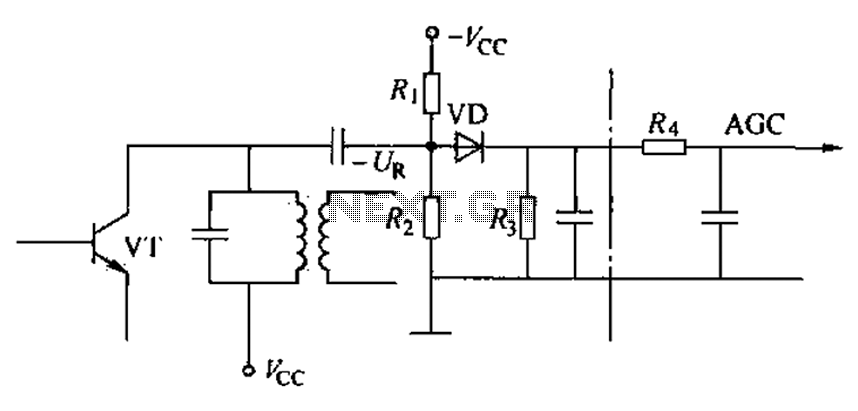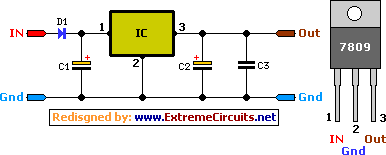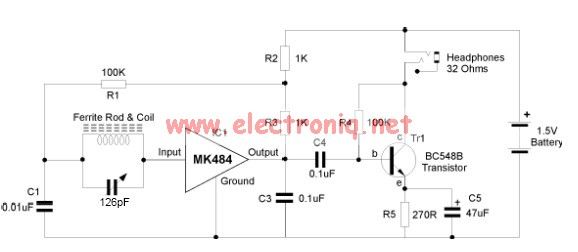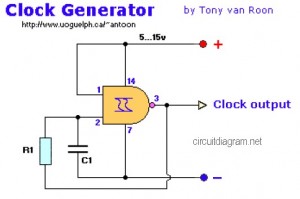
25mV Joule Thief circuit

A 25mV Joule Thief powered by a Peltier device that utilizes body heat.
The 25mV Joule Thief circuit is an innovative energy harvesting solution that converts the minimal voltage generated by a Peltier device into usable electrical energy. The Joule Thief operates on the principle of boosting low voltage levels to more usable voltages, making it particularly suitable for applications where energy sources are limited, such as in wearable technology or low-power sensors.
In this circuit, the Peltier device acts as a thermoelectric generator, harnessing the temperature differential between the body and the surrounding environment. When one side of the Peltier is heated by body heat while the other side remains cooler, a small voltage, typically around 25mV, is generated. This voltage is insufficient for most applications, which is where the Joule Thief comes into play.
The Joule Thief circuit consists of a few key components: a transistor, a resistor, a coil (inductor), and a diode. The transistor is configured as a switching device that rapidly turns on and off, allowing energy to be stored in the inductor during the 'on' phase. When the transistor switches off, the energy stored in the inductor is released, producing a higher voltage output. The diode ensures that the current flows in the correct direction, preventing backflow into the circuit.
This design is particularly advantageous in scenarios where energy efficiency is critical. The Joule Thief can effectively boost the low output from the Peltier device to a higher voltage level that can be used to power small electronic devices or charge capacitors for later use. The integration of this technology into wearable devices could lead to self-sustaining systems that rely on the body's heat as a renewable energy source.
Overall, the combination of a Peltier device and a Joule Thief circuit presents a promising approach to energy harvesting, particularly in applications focused on sustainability and energy efficiency.25mV Joule Thief powered by peltier merely using our body heat 🔗 External reference
The 25mV Joule Thief circuit is an innovative energy harvesting solution that converts the minimal voltage generated by a Peltier device into usable electrical energy. The Joule Thief operates on the principle of boosting low voltage levels to more usable voltages, making it particularly suitable for applications where energy sources are limited, such as in wearable technology or low-power sensors.
In this circuit, the Peltier device acts as a thermoelectric generator, harnessing the temperature differential between the body and the surrounding environment. When one side of the Peltier is heated by body heat while the other side remains cooler, a small voltage, typically around 25mV, is generated. This voltage is insufficient for most applications, which is where the Joule Thief comes into play.
The Joule Thief circuit consists of a few key components: a transistor, a resistor, a coil (inductor), and a diode. The transistor is configured as a switching device that rapidly turns on and off, allowing energy to be stored in the inductor during the 'on' phase. When the transistor switches off, the energy stored in the inductor is released, producing a higher voltage output. The diode ensures that the current flows in the correct direction, preventing backflow into the circuit.
This design is particularly advantageous in scenarios where energy efficiency is critical. The Joule Thief can effectively boost the low output from the Peltier device to a higher voltage level that can be used to power small electronic devices or charge capacitors for later use. The integration of this technology into wearable devices could lead to self-sustaining systems that rely on the body's heat as a renewable energy source.
Overall, the combination of a Peltier device and a Joule Thief circuit presents a promising approach to energy harvesting, particularly in applications focused on sustainability and energy efficiency.25mV Joule Thief powered by peltier merely using our body heat 🔗 External reference





